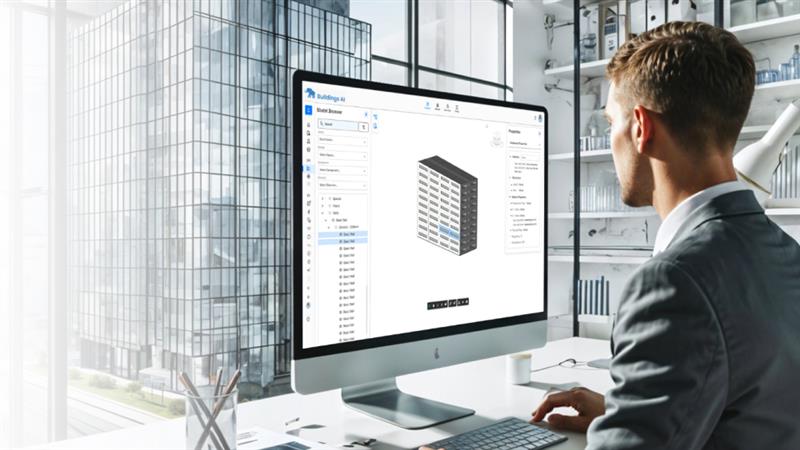Written by Praveen Kumar
Friday, January 25, 2019
Role of CFD in evaluating occupant thermal comfort | simulationHub Blog
By
Praveen Kumar


The idea of this blog is to provide a detailed discussion of various thermal comfort indices and the role of CFD in evaluating thermal comfort in occupied spaces.
Background
Thermal comfort is an important aspect in representing human satisfaction, which is defined as "the condition of mind which expresses satisfaction with the thermal environment" – ASHRAE. It means that a person feels neither too cold nor too warm. Thermal comfort is important for health and well-being as well as productivity. Thermal comfort is critical inside office spaces, restaurants, public buildings including airport, station, movie hall, library, classroom and other conditioned occupied spaces.
Recipe for thermal comfort
Let me make it clear right from the start there is no 'one size fits all' recipe for thermal comfort. It depends on environmental factors such as air temperature, humidity, movement of air, thermal radiation, as well as personal factors like occupant’s physical activity, and clothing.

Factors affecting human thermal comfort
This puts a question of how to check the level of thermal comfort in an occupied space?
Evaluating thermal comfort
Occupant thermal comfort is difficult to analyze because it is as much psychological as it is physiological. ‘Comfort’ is a state of mind or a personal feeling - not a quantifiable metric. Thanks to Prof. Fanger for providing us with the parameters to evaluate occupant comfort. Following are the parameters to evaluate occupant thermal comfort.
Predicted Mean Vote (PMV) and Predicted Percentage of Dissatisfied (PPD)
Predicted mean vote (PMV) is an index that predicts the mean value of the thermal sensation votes (self-reported perceptions) of a large group of persons on a sensation scale expressed from –3 to +3 corresponding to the categories: cold | cool | slightly cold | neutral | slightly warm | warm | hot. PMV calculation requires the following inputs: metabolic rate (Met), clothing insulation Icl (clo), air temperature, air velocity, etc…

Predicted Mean Vote (PMV) thermal comfort criteria
The values of local air temperature and velocity can be measured or computed through CFD simulations. ASHRAE 55 provides tables for occupant metabolic rates based on their activity level and the clothing insulation based on the garment.

Occupant metabolic rate - ASHRAE
For example, the typical values considered for an office environment are:
- Metabolic rate = 1.0 Met (60 W/m2)
- Clothing insulation = 0.5 clo (summer) and 1.0 clo (winter)
ISO 7730 provides the formula for calculating PMV for a specified condition.

ISO 7730 standard formula for calculating PMV
Predicted percentage of dissatisfied (PPD) is an index that establishes a quantitative prediction of the percentage of thermally dissatisfied people determined from PMV.
$$PPD = 100 - 0.95 \times exp(-0.03353 \times PMV^4 - 0.2179 \times PMV^2)$$
Comfort Criteria : Occupant comfort is achieved when the PMV value is between -0.5 to +0.5. The corresponding predicted percentage of dissatisfied people falls below 10%.

Predicted Percentage Dissatisfaction vs Predicted Mean Vote
Draft Rating Index (DR)
Draft is an unwanted local cooling of the body caused by air movement. Draft rating is an index that establishes a quantitative prediction of the percentage of occupants dissatisfied due to the draft.
$$\text{Draft Rating (%)} = (34 - T_x) (V_x - 0.05)^{0.62} (0.37 \times V_x \times T_u + 3.14)$$
where,
\(t = \text{Local air temperature } (^\circ C)\)
\(V_x = \text{Local air speed } (m/s)\)
\(T_u = \text{Turbulence intensity } (\%)\)
Comfort Criteria : Occupant comfort is achieved when the percentage of dissatisfied people due to draft is below 20%.
Effective Draft Temperature
Effective draft temperature is a calculated temperature difference that combines the effect of air temperature and air motion on a human body.
$$\text{Effective Draft Temperature }(^\circ F) = (T_x - T_avg) - 0.07(V_x - 30)$$
where,
\(T_x = \text{Local air temperature } (^\circ F)\)
\(T_{avg} = \text{Room average air temperature } (^\circ F)\)
\(V_x = \text{Local air velocity } (ft/min) \text{ or } (fpm)\)
Comfort Criteria : Occupant comfort is achieved when the effective draft temperature (EDT) is between -3 °F to +2 °F and the air velocity is less than or equal to 70 fpm.
Role of CFD in Assessing Thermal Comfort
A complex and multi-variable analysis such as thermal comfort is difficult to perform experimentally. This is where Computational Fluid Dynamics (CFD) comes to our aid. By utilizing CFD we can easily evaluate the temperature, velocity, comfort profiles for any given indoor model. CFD in thermal comfort analysis is one of the most useful methods of identifying thermal perceptions of occupants in a building space and of possible energy savings. CFD is a powerful tool to analyze thermal comfort and assess the dissatisfied percentage in buildings. But the major barriers that prevent HVAC design engineers and architects from using this technology is the lack of CFD expertise, the high upfront cost associated with the software license and access to computational resources.
simulationHub is coming up with a solution for this problem through a web-app that provides UI with easy intuitive problem setup, and automated CFD process. Taking it a step further, use of cloud computations would cut the time and economic resources. We are looking forward to collaborate with HVAC equipment manufactures. Write to me if you are interested.

Get the sneak peek into the upcoming app for Occupant Thermal Comfort in this blog.
Comments
Recent posts


